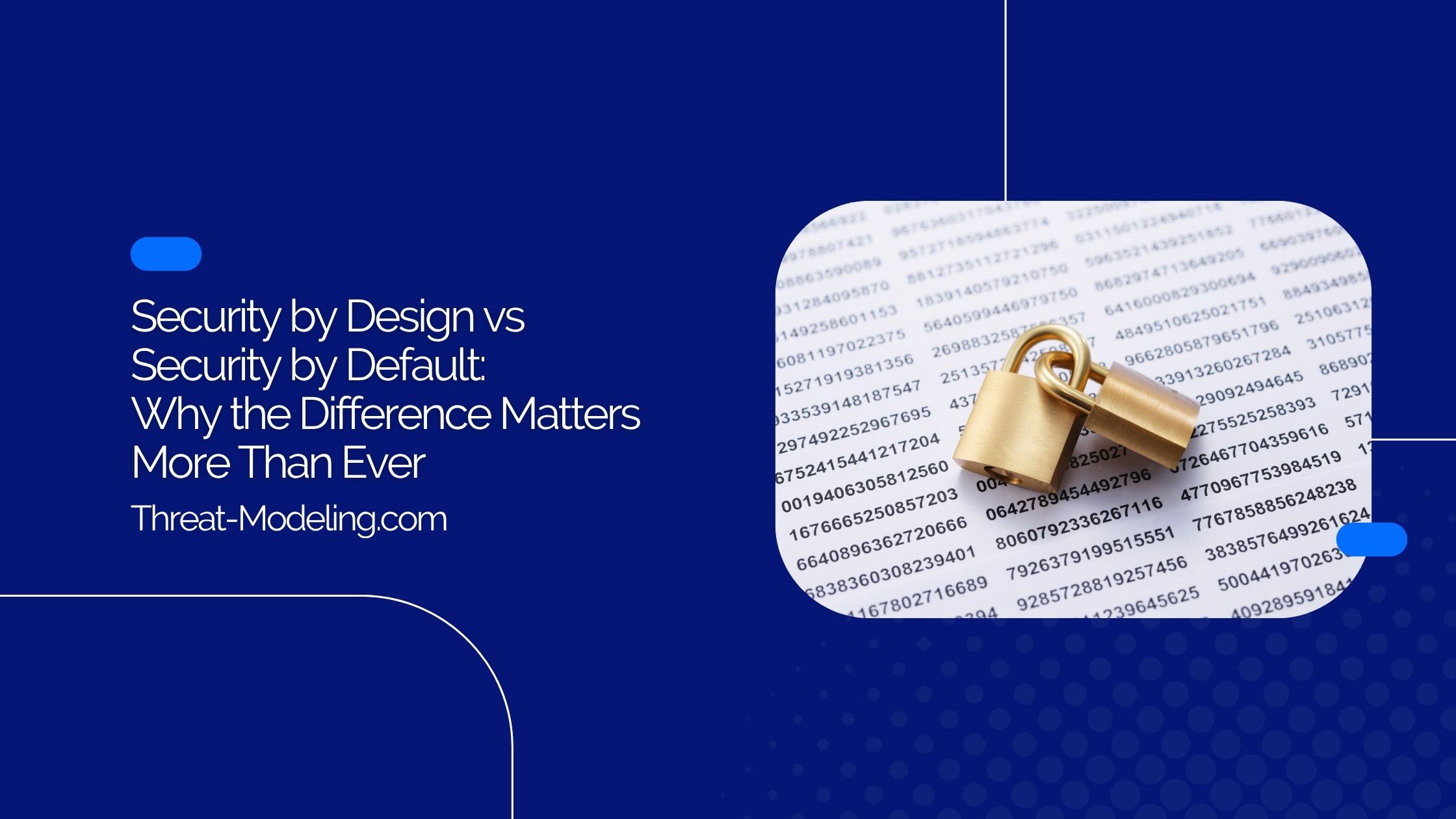Security by Design vs Security by Default is a debate that keeps resurfacing whenever a new breach makes headlines. Both phrases sound reassuring, like two sides of the same protective coin, yet they point to very different mindsets about how we build and trust modern systems. If you lead a product team, manage infrastructure, or simply worry about the safety of your data, understanding this distinction is more than technical trivia. It shapes the way you plan, budget, and sleep at night.
Getting the Vocabulary Straight
The first hurdle is the language itself. Security by Design means you weave protections into the very fabric of the product from day one. It is proactive, deliberate, and often invisible to the end user. In contrast, Security by Default speaks to sensible out-of-the-box settings. This approach assumes that even if engineers do everything right, users might still leave the digital door open. So, the vendor locks that door for them unless they twist the knob themselves. Both philosophies have merit, but they address different risk layers and timelines.
The Origin Stories
Security by Design has roots in formal software engineering. Back in the 1970s, researchers at the U.S. Department of Defense spelled out the notion that trusted systems begin with a trusted architecture. In those days, mainframes ruled, and a single design flaw could compromise entire installations. Security by Default, however, emerged as personal computing exploded in the 1990s. Consumers wanted plug-and-play devices, not multi-page configuration walkthroughs. By shipping hardened defaults, vendors reduced the attack surface for users who might never open a manual.
Why the Two Strategies Sometimes Clash
On paper, Security by Design and Security by Default should complement each other. In practice, they can collide. Suppose a cloud platform enforces strict encryption by default, but the underlying design never accounted for performance hits on burst traffic. Customers will feel the slowdown, toggle off encryption, and post angry reviews. A similar tension appears in mobile apps that block every third-party cookie at launch. If ad revenue dries up, the publisher might embed new tracking methods that circumvent user choice. Here, defaults mask a lack of thoughtful design, leading to a fragile patchwork rather than a cohesive safety net.
The Economics of Building Security First
Building secure code from scratch costs more upfront. There is no way around that. You pay for threat modeling workshops, extra developer training, and repeated penetration tests. Yet the return on this investment appears when a hotfix does not derail a release cycle, when compliance audits go smoothly, and when customers renew contracts because the brand exudes reliability. A 2023 IBM / Ponemon Institute study pegged the average data breach cost at USD 4.45 million. Multiply that by public relations fallout and lost market share, and the savings of cutting corners vanish in a blink.
Defaults as a Lifeline for Non-Experts
Not every organization can hire a squad of seasoned security engineers. Start-ups and small agencies often rely on commercial platforms that hide complexity behind one-click dashboards. In those contexts, Security by Default acts like an automatic seatbelt. You do not think about it; it simply engages. Frameworks such as Django, Rails, and Laravel escape HTML by default, which blocks Cross-Site Scripting attacks for developers who may never study the OWASP Top Ten in depth. Similarly, modern operating systems now enable full-disk encryption during initial setup, sparing users the ordeal of manual key management. The resulting uplift for society is huge: millions of endpoints hardened without anyone reading a white paper.
Case Study: A Tale of Two Messaging Apps
Consider two fictional messaging apps, ChatBright and TalkSecure. ChatBright launched fast, chasing growth. It later bolted on end-to-end encryption as a premium feature, toggled off by default. Activating it broke group chats, so most users skipped the hassle. Six months later, a breach exposed plain-text conversations, and the brand cratered. TalkSecure, in contrast, embedded encryption in its core protocol. Messages never traveled unprotected. Even if users forgot to set a password on their account, the transport layer remained sealed. When an industry blog ran penetration tests on both apps, TalkSecure walked away unscathed, earning free publicity and a surge of trust. The difference boiled down to Security by Design vs Security by Default, and the outcome was night and day.
The Role of Regulation
Governments have begun to notice. Europe’s GDPR and the upcoming Cyber Resilience Act demand “data protection by design and by default.” That wording, borrowed from privacy pioneer Ann Cavoukian, blends the two philosophies into a single legal baseline. Vendors must architect systems that inherently minimize data exposure, then ship them with the strictest settings already applied. Non-compliance can trigger fines that scale with global revenue. This regulatory push nudges laggards toward mature engineering, yet it also raises the bar for documentation, vendor risk reviews, and supply-chain transparency.
Human Factors Are Still the Wild Card
The smartest blueprint can crumble in the face of human curiosity or fatigue. Employees reuse passwords, click phishing links, or disable multi-factor authentication because it slows the morning coffee run. That is where Security by Default corners a special value proposition. By throttling risky features, rate-limiting API calls, and sandboxing macros, the system guards users from themselves. Meanwhile, Security by Design provides the depth needed to recover when, inevitably, someone slips. For example, a Zero Trust network assumes every node could be hostile, so lateral movement remains contained.
Cloud-Native Context
Move workloads to the cloud, and the spotlight on this topic intensifies. Cloud providers tout shared-responsibility models, leaving customers to safeguard applications and data, while the provider covers physical infrastructure. Here, Security by Design determines how microservices authenticate, log, and fail gracefully. Security by Default refers to per-service firewall rules, strong API keys, and automatic patching that the vendor flips on for you. If you disable those defaults without compensating controls, the cloud’s elastic walls become a mirage.
Measuring Success
You cannot improve what you do not track. For Security by Design, success metrics include defect density, mean time to remediation, and architectural risk scores. For Security by Default, look at patch adoption rates, default password elimination, and the percentage of users who leave protective settings intact. High numbers mean the system shields even the apathetic. Low numbers signal friction that invites workarounds.
Bridging the Gap in Real-World Roadmaps
So, how do you merge both concepts into a coherent roadmap? Start with a threat model that catalogues data flows, entry points, and attacker motivations. Bake controls into each project requirement, not as a separate “security backlog.” Pair that with sensible defaults across deployment infrastructure. When a new feature ships, test it under locked-down settings to ensure usability remains intact. Finally, publish clear guidance for power users who might override defaults, so their custom tweaks do not unravel systemic protections.
Tools That Reinforce Both Approaches
Static application security testing (SAST) and dynamic scanning align with Security by Design, catching flaws before they reach production. Configuration management platforms, on the other hand, empower Security by Default by enforcing baseline policies. Together, they form feedback loops that keep mature teams honest, revealing drift in code and in runtime alike.
The Future: From Manual Guardrails to Autonomous Defense
Artificial intelligence now scans logs, predicts exploit patterns, and patches vulnerabilities in near real time. In that emerging paradigm, Security by Design morphs into meta-design: teaching models to decide trust boundaries. Security by Default evolves into adaptive defaults that calibrate controls based on observed behavior. Instead of one static lockdown level, the system tightens or relaxes based on risk scores, all without overwhelming users with toggles.
Closing Thoughts
Security by Design vs Security by Default may sound like jargon, yet the phrase captures a fundamental tension between ideal architecture and practical protection. The safest future belongs to organizations that resist treating them as competing ideologies. Build systems that assume attackers are lurking in the codebase, then ship those systems in a locked state that even your laziest customer cannot accidentally undo. Get that mix right, and you gain more than compliance checkmarks. You gain resilience, trust, and the freedom to innovate without the fear that tomorrow’s headline breach will carry your company’s name.
Key Takeaway
If you remember only one thing, let it be this: Design keeps the castle walls tall, and default keeps the drawbridge raised. Skimp on either, and the moat is just a decorative pond. Embrace both, and you build a fortress worthy of the data it guards.


